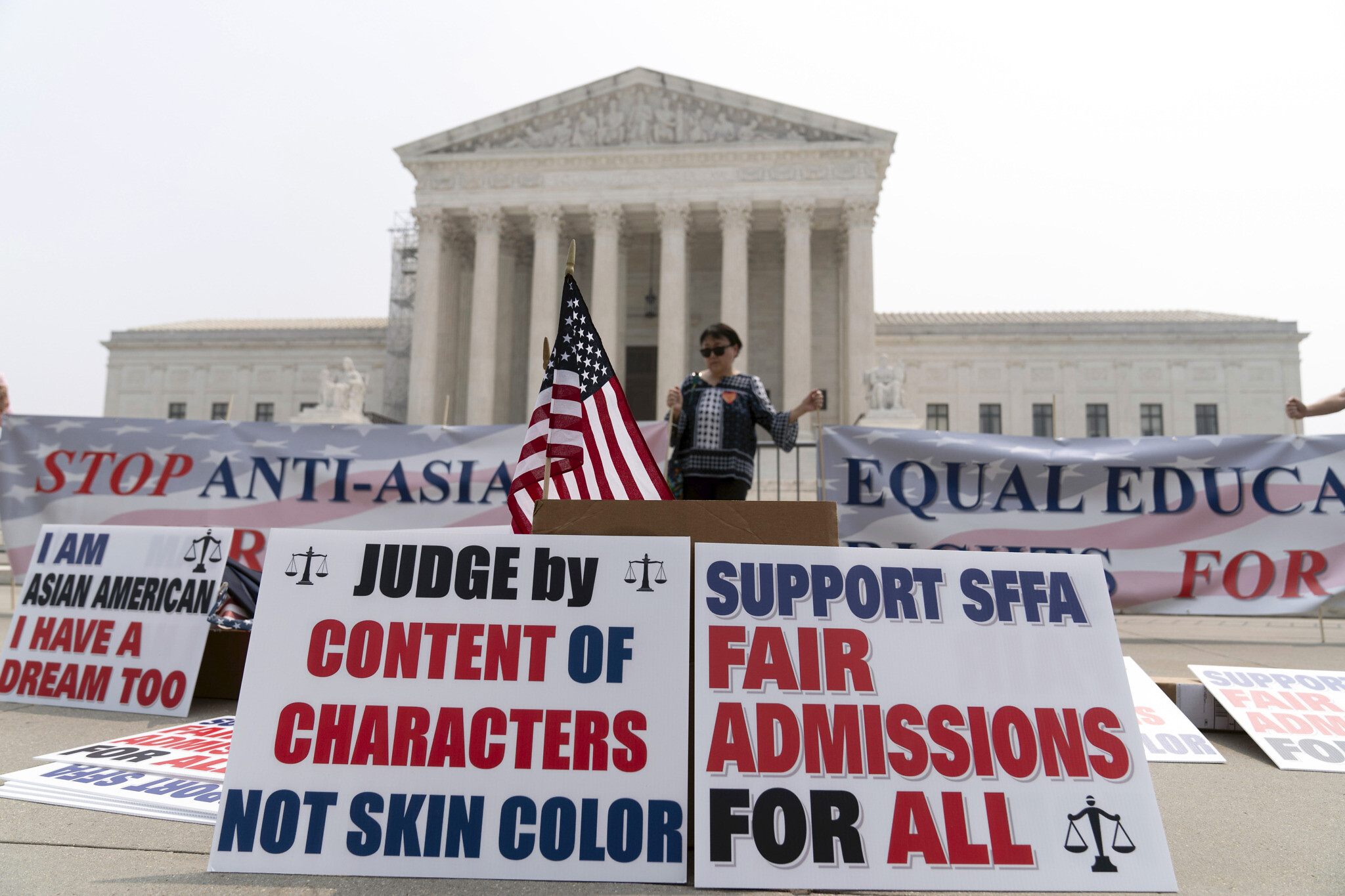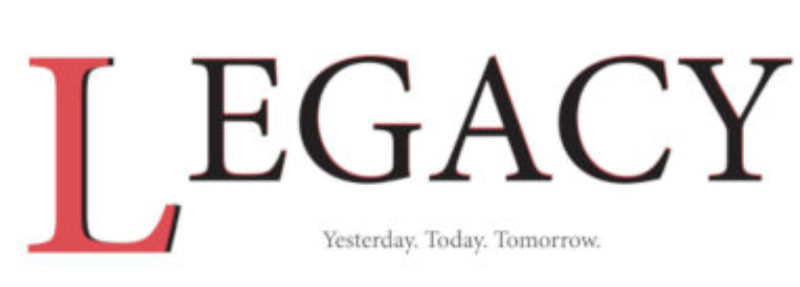By: Maria-Paula
The US Supreme Court on Thursday overturned positive discrimination on affirmative action in the higher education sector following decades of the policy support of the people of color in university admissions across the country.
Since its adoption as a policy in the 1960s for reparations, affirmative action has been used as a measure to defend and increase diversity in institutions.
This emerged after a Supreme Court debate last spring where Justice Brett Kavanaugh supported the policy for benefit given to descendants of slaves, whether a cash payment or something less concrete, like preferential treatment in college admissions.
Though most, if not all, of the descendants of enslaved people in the U.S. are Black, having a personal connection to historical wrongdoing would technically be a race-neutral factor, Kavanaugh reasoned, and thus fair game for consideration in admissions.
US President Joe Biden disagreed with the court’s decision adding that discrimination still exists in America pointing out the ideologically split between the nine justices, six conservative and three liberals.
“We cannot let this decision be the last word. This is not a normal court,” he said.
Legal experts and higher education scholars are now weighing the same question in their search for strategies to fill the hole left by the Students for Fair Admissions decision.
Education Secretary Miguel Cardona said that the court took away a very important tool that university leaders used to ensure diversity on campus.
“However, what it didn’t take away is the intent to ensure that our colleges are made up of beautifully diverse students, much like our country is,” said Cardona, adding that the White House will issue guidance to universities with instruction on how to legally maintain diversity.
Many older universities have a complicated history with both slavery and formalized racial discrimination.
Some of the old universities including Harvard and the University of Maryland have embarked on research projects to explore those connections. The University of Virginia (UVA), which is one of the oldest universities in the US, situated at the center of plantation-rich Virginia, was constructed and maintained partly by enslaved laborers.
In 2013, UVA launched the President’s Commission on Slavery and the University to study the institution’s ties to slavery. That commission expanded into a consortium which now boasts over 100 members across the globe.
Kirt von Daacke, a UVA history professor and the commission’s founding leader said it wasn’t until the 2017 ‘Unite the Right rally in Charlottesville, that the university began to turn the initiative’s findings into policy.
“That was the big turning point,” he said. “This had always been a truth-telling mission, but we recognized we couldn’t be a 21st-century university without first recognizing our deep complicity in human bondage and in anti-Black racism for decades after the Civil War.”
In addition to setting up a multimillion-dollar fund to find slave descendants and help support them since 2016, Georgetown University announced that it would give preferential treatment, akin to what legacy prospects receive, to applicants descended from the 273 people who were enslaved and later sold by what was then the Maryland Province of Jesuits. This makes Georgetown’s effort unique in the admissions preference it offers.
On the other hand, in lieu of a checkbox for legacy applicants in August, UVA added that it would offer space for an optional essay on a student’s “personal or historical connection” to the university, which could mean having an alumni parent or being “a descendant of ancestors who labored at UVA.”
“The more targeted it is, the more defensible,” said von Daacke. “What UVA did was, like Georgetown, narrow it down to those who worked on the campus; their argument will be strictly remedial … it’s a calculated gamble, and it’s going to be interesting to see how that plays in the courts.”
The reparations initiatives by UVA and Georgetown make for a useful comparison. One is a public institution whose efforts must be approved by elected officials; the other is a wealthy private university in liberal Washington D.C., with ample resources and the leeway to pursue atonement as its leaders see fit.
“That difference explains the gap between their strategies,” von Daacke said. “We have to work within the limitations of the Supreme Court, the Fourth Circuit Court decisions and the political realities as a public institution,” he added.
Kevin Brown, a professor at the University of South Carolina who specializes in the intersection of race, law and education said the more narrowly defined an admissions reparations program is, the more likely the courts will be to see it as a compelling, race-neutral interest. He doesn’t expect such programs to go unchallenged, or to suddenly proliferate among liability-shy institutions. But he does believe they have a shot.
By acknowledging and honoring the slaves who built the university, UVA finished construction of a Memorial to Enslaved Laborers in 2020.
Come 2021, Virginia’s former-governor Ralph Northam signed a law requiring the five public universities in the state founded before the end of the Civil War to create scholarship funds for descendants of Virginia slaves.
The introduction this fall of legacy preferences for descendants of slaves could be seen as a voluntary expansion of that mandate into the realm of admissions. Some have criticized the new policy for its vagueness, as well as for lumping the descendants of slaves in with legacy applicants, some of whom may have families whose wealth derives from the plantations where those slaves labored.
Investigations show that more 18th-century campuses in the deep South are grappling with their historic links to slavery.
Princeton University’s first eight presidents personally owned slaves. Rensselaer Polytechnic Institute, founded in 1824 in upstate New York, was established largely on donations from a wealthy Dutch slaver, von Daacke said. Just last week Harvard University announced a “Legacy of Slavery” grant initiative, spurred by a 2022 report on the university’s ties to the slave trade.
“Almost any institution in America founded before 1865 is in some way connected to the history of slavery, with the exception of a handful of abolitionist colleges like Oberlin,” von Daacke said. “It’s just more direct in the south.”
Von Daacke also reiterated that the essay question is a “blunt tool” for diversifying the student body, acknowledges, and understands the criticism. He also noted that it’s more than many colleges are doing.
“It’s a good sign that we’re not shying away from this issue,” he said. “Anything universities can do to show a commitment to diversity post-SFFA, they should do it.”
The Thursday ruling covered two cases involving admissions at Harvard and the University of North Carolina (UNC). Having justices rally behind ‘Students for Fair Admissions’, an organization founded by legal activist Edward Blum, the court ruled 6-3 against UNC and 6-2 against Harvard.
In defense of their case, the group last October before court argued that Harvard’s race-conscious admissions policy violated Title VI of the 1964 Civil Rights Act. The law bars discrimination based on race, color or national origin.
Gary Orfield, co-founder of the Civil Rights Project at the University of California, Los Angeles, where he also teaches education and law, has been in higher education long enough to see the full life cycle of affirmative action.
Orfield who was born in the mid-1960s said in the wake of the Brown v. Board of Education Supreme Court decision, which outlawed segregated public schools, some higher education institutions, seeing woefully low nonwhite enrollment, proactively sought to admit more students of color. This was done by establishing policies to give preference to those applicants, explicitly citing their historical exclusion from American higher education.
He said that initiative was driven by a rising consensus that higher education had a central role to play in alleviating racial disparity, which was evident in his earliest jobs in academia at UVA, where he was an assistant professor in the late 1960s. Black students made up less than one percent of the student body; at the University of Illinois Urbana-Champaign, where he held his first tenured position in the mid-1970s, the Ku Klux Klan was an official student organization.
“Almost everybody believed that diversity was beneficial and good, but the basic motivation clearly was about civil rights and racial justice,” he said about the judgement.
The judgement comes seven years after the most recent backing by the Supreme Court on affirmative action in 2016.
Chief Justice John Roberts and Justice Clarence Thomas, the nation’s second black justice, were some of the justices who called for an end to affirmative action arguing that such programs were patently unconstitutional.
Liberal justices Ketanji Brown Jackson, the first black woman appointed to the court, and Sonia Sotomayor were amongst the dissented judges describing the ruling as a tragedy for all affected parties and colorblindness to a constitutional principle in an endemically segregated society.
While in 2020s ballot California voters rejected hopes to return affirmative action in the state more than twenty years after its ban, Arizona, California, Florida, Georgia, Oklahoma, New Hampshire, Michigan, Nebraska and Washington already have bans on race-based college admissions.
Supreme Court Says No to Affirmative Action in Universities



